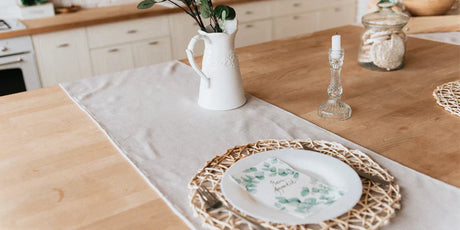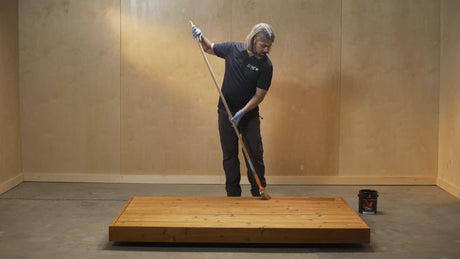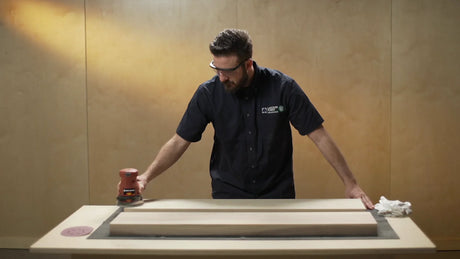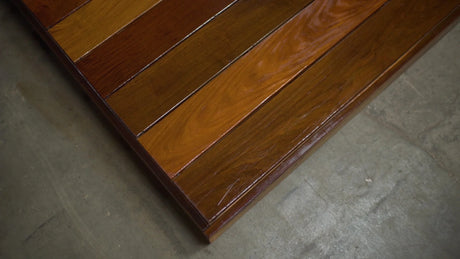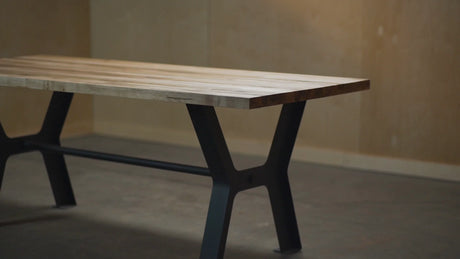In this section, Cabinetmaker's Glossary, we will attempt to demystify the specialized language of the cabinetmaking world.
To each lord, all honor.
Where does the word cabinetmaker come from?
The word "cabinetmaker" comes from the word "ebony," a precious, hard, and dark wood, primarily native to Africa. Originally, in the 17th century, this term referred to artisan carpenters specializing in the manufacture of luxury furniture using ebony veneers, which were highly sought after for their black color and rarity.
André-Charles Boulle , cabinetmaker to the king at Versailles from 1642 to 1732, perfected the technique of marquetry in "parts" and "counterparts". He superimposed sheets of precious materials (tortoiseshell, copper, brass, tin, horn) and cut out identical patterns in a single operation, making it possible to obtain two inverted panels: one where the metal makes the pattern on a tortoiseshell background, the other where the tortoiseshell makes the pattern on a metal background.
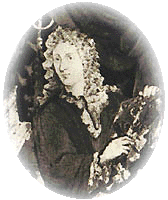
Here are some of his works:






HAS
B
B4F: Wooden board planed on all 4 sides.
Blue stain: A defect in appearance caused by a fungus from the ascomycete family but which does not affect the mechanical properties of the wood.
Whitewood: Refers to softwood species such as spruce, poplar or linden as opposed to hardwood and much more noble species such as beech or oak.
Exotic wood: Term designating species from Europe, Africa, Southeast Asia or South America, more generally equatorial species, generally of high density and rot-proof (>800kg/m3) and class 4 or 5.
Lumber: Trunks (or logs) large enough to be sawn, sliced (higher quality), or peeled.
Heartwood: Heartwood, or duramen, is the wood from previous years; it contains no living cells and provides support. It is often waterproof.
Rough-sawn lumber: Sawn wood, without finish. This wood is rough to the touch because the wood fibers are visible. Meets standardized permissible deviation requirements.
Standing log: Log cut from the largest section of the log.
End grain: Wood seen on the transverse plane of the tree obtained by a section perpendicular to the axis of the tree. On this plane, the growth rings are visible in the form of concentric rings.
Heartwood: Central part of the trunk below the sapwood.
Compression wood: Reaction wood typically formed at the lower part of the branches and on the side opposite the stress.
Hardwood: Wood from forest species called hardwoods, belonging to the Angiosperm class.
Reaction wood: Wood that exhibits distinct anatomical characteristics as it forms in the leaning or curved portions of stems and branches. The plant attempts to return to a normal position by producing reaction wood.
Tension wood: Reaction wood typically formed at the top of branches and on the side of stress that causes a stem or trunk to bend in hardwoods.
Latewood: The outer part of the growth ring, formed at the end of the growing season. Also called "summer wood".
Native wood: Wood from trees growing locally.
Early wood: Inner part of the growth ring, formed at the beginning of the growing season. Also called "spring wood".
C
Counterface: The side which, according to standardized grading rules, is judged to be the least good.
Ring: Concentric layer of a tree whose number indicates the age of the tree.
Rafter: A piece of framework supported by purlins, and which supports battens, joists or boarding.
Wood class: Rating from 1 to 5 of the wood's resistance to fungi, larvae, humidity and various attacks. 1 being the most resistant.
Laminated: Assembly of pieces of wood by gluing, to increase the thickness or width.
Interlocked grain: The direction opposite to the grain of the wood. The direction opposite to the grain of the wood. It is possible that the interlocked grain is characteristic of certain tree species (Sapelli). The banded pattern is common in tropical woods. These are superimposed layers of grain inclined to the right alternating with left layers. There are grain deviations: draped, wavy, etc.
Dial: Radial slots running from the central part of the log to its periphery.
Cambium: A layer of generative cells under the bark that ensures the tree's diameter growth.
Growth ring: In cross section, a concentric growth layer made up of cells produced over the course of a year.
Discoloration fungus: Superficial stains due to the action of microorganisms.
Exposed core: Pith appearing on part or the entire length of a face or edge.
Enclosed heart: Pith, present but not appearing on the faces or on the edges.
Star Heart: A set of two or more heart slots.
G
Cracks: Cracks on the surface of the boards due to drying too quickly.
Wood grain: More or less dense bonding of the particles that make up the material.
Log: Limbed and topped trunk
H
Humidity (of wood): Also "water content of wood". Corresponds to the mass of water contained in the wood, expressed as a percentage of its anhydrous mass.
I
L
Paneling: Any panel made from an assembly of dimpled boards to make doors, partitions, wall coverings, etc.
Woody: Characterizing tissues whose walls are impregnated with lignin and which therefore have a certain rigidity.
Lignin: One of the main constituents of wood cell walls.
Wood-eating: Said of a fungus that feeds on wood.
Burl: A woody outgrowth of a more or less globular shape. The tangled and knotted fibers of burl wood form characteristic patterns. As such, burls are highly sought after for cabinetmaking and marquetry.
Lunure: Presence, in the heartwood, of a ring, complete or not, having the color and properties of the sapwood.
M
Mesh: Irregular longitudinal stripes or speckles, resulting from the longitudinal cutting of the rays; they appear on one face of quarter-sawn wood.
Hammering (or marking): Mark made on trees intended to be felled.
Density: Quotient of the mass of a body by its volume.
Dry rot: Wood-eating fungus capable of damaging wood with a humidity level above 22%.
N
Adherent knot: Knot whose outer layer is continuous (adhesive) with the surrounding wood over at least 3/4 of the perimeter of the knot section at one face of the sawn timber.
Dead knot (or non-adherent knot): Knot whose outer layer is continuous (adhers) with the surrounding wood over an area less than a quarter of the perimeter of the knot section at a sawn face.
Partially adherent knot: A knot whose outer layer is continuous (adhered) to the surrounding wood over an area exceeding 1/4, but less than 3/4 of the perimeter of the knot section at a saw face.
Rotten knot: A knot affected by rot.
Healthy knot: Knot showing no signs of rot.
Falling knot: A dead knot that is not continuous with the surrounding wood and becomes detached.
Grouped knots: Knots located in such a way that the straightness of the thread is not restored between two successive knots.
Exposed knot: Knot visible on the peripheral surface of a round piece of wood.
Covered knot: Knot not appearing on the peripheral surface of a round timber.
Through knot: A knot appearing on two opposite sides of a sawn timber.
S
Wood drying: Air dry: Natural drying method carried out on wood that does not require drying in a kiln, wood that is naturally stable. Kiln dry: Artificial drying process that is faster than natural drying, necessary to guarantee stability and the desired humidity level.
Air-dry (wood): Wood having a moisture content substantially in equilibrium with natural atmospheric conditions
surrounding areas, because it has lost its free water. Humidity between 18 and 22%.
Section: Straight transverse surface of the wooden part.
Overshot: Log produced from the log above the butt log.
Overlength: Additional length to the nominal dimension to compensate for the loss of length due to cutting.
Sawing: The action of cutting wood using a saw.
Sawn timber: Sawn timber that has one face perpendicular or approximately perpendicular to the rays, or, if the rays are not visible, sawn timber that has one face tangential or approximately tangential to the growth rings.
Mesh-sawn: Sawn lumber in which the angle between the rays and a face is 10° or less. If the rays are not visible, sawn lumber in which the angle between the growth rings and a face is 80° or more.
Quarter-sawn: Lumber having one face parallel or approximately parallel to the rays, or, if the rays are not visible, lumber having one face perpendicular or approximately perpendicular to the growth rings.
Sawdust: Wood particles resulting from the action of the saw tooth on the material.
Secondary processing: Production of finished or semi-finished products (packaging, construction elements, stakes and posts, woodwork, furniture, panels, etc.).
Section: Straight transverse surface of the piece of wood.
Sap: Liquid circulating in the various parts of plants.
Raw sap (ascending): Liquid substance consisting of water and mineral salts, absorbed by the roots and transported by the vessels (hardwoods) or by the tracheids (softwoods) to the leaves to contribute to photosynthesis.
Elaborated sap (descending): Organic, nourishing sap that provides growth tissue. Substance produced in leaves by the process of photosynthesis from raw sap, light, and CO2. The elaborated sap is transported through the bast to "feed" the cells or to be stored there.
T
Tannin: An amorphous substance also chemically called polyphenol. It is found in the trunk, bark, leaves, and roots of most plants. Tannin is commonly found in the plant kingdom, but especially in trees.
Tracheid: In conifers, a spindle-shaped cell several millimeters long, playing a supporting role and contributing to the conduction of sap in the wood.
Slicing: Method of cutting a log of wood into thin sheets which are intended for ornamental veneers.
V
Grain: Pattern produced by the wood grain on its surface. In some cases, it is reinforced by the reflection of light.Vessels: In hardwoods, a stack of cells forming a channel which ensures the conduction of sap.
X
Xylophagous: Refers to an animal organism (insect) which feeds on wood (woodworm, capricorn beetles, bark beetles, lyctus beetles, etc.).
![]()


